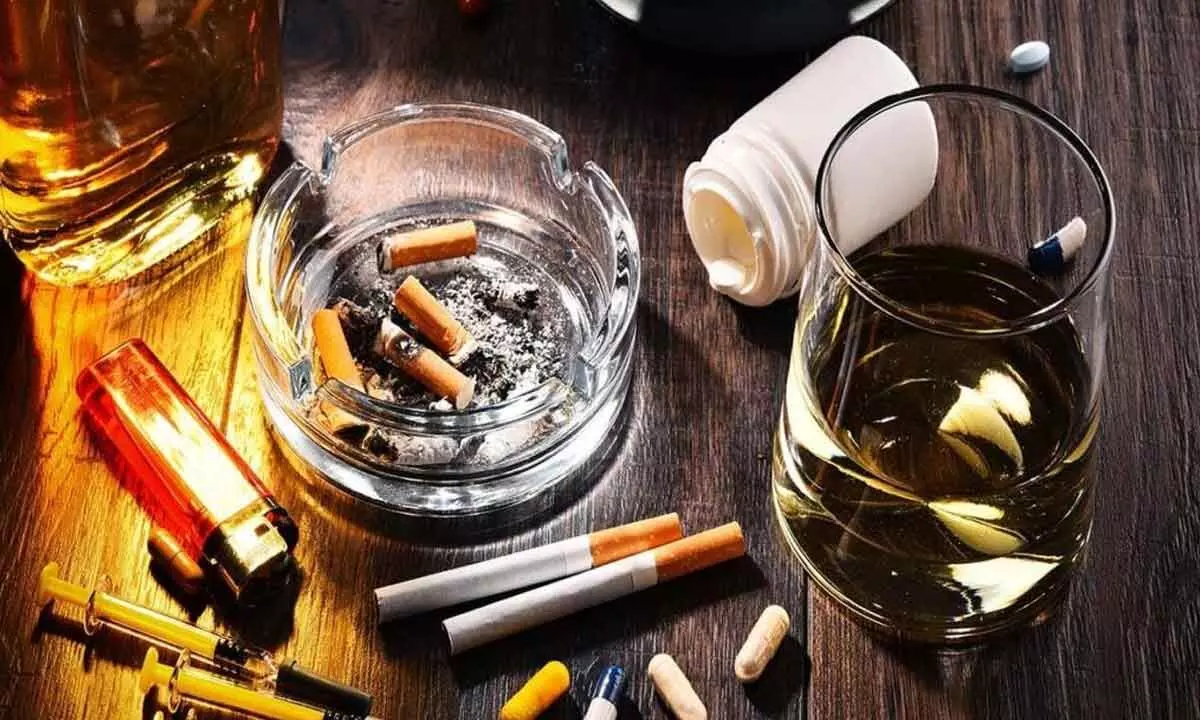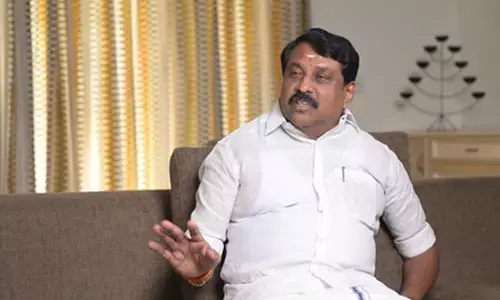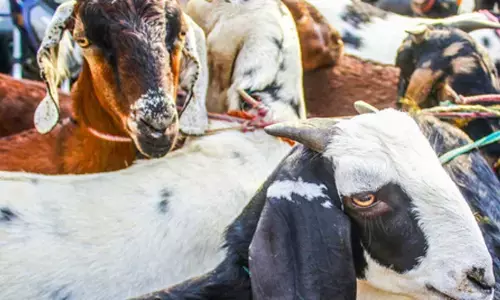Need to step up India's war on drugs and terrorism

Projections made on the basis of National Surveys conducted by the Ministry of Social Justice and empowerment show that at least 80 to 100 million people India are drug dependents.
Of late there has been a spate of seizures of drugs and in particular synthetic drugs such as cocaine, crystalline methamphetamine, (apart from heroin) in large quantities being smuggled through vessels originating in Pakistan and shipped via Iranian ports to conceal the source of drugs. The trend started in 2017 when a ship M.V. Henry was seized on 20.7.2017 off the Gujarat Coast from which 1500 kg. of heroin was seized.
This was followed by a number of other seizures some of which are given below:
• In April 2021, the DRI seized 303 kg of cocaine from a container in Tuticorin Port concealed in wooden logs.
• On 22nd April 2021 a fishing boat was apprehended by the Indian Navy in the Arabian Sea trying to smuggle 337 kilograms of heroin. This is the fourth major drug bust by the Indian Navy and the Coast Guard.
• On 13th February 2022, the NCB seized Narcotic Drugs from a vessel in the high seas off Saurashtra Coast. The seized drugs included around 529 kg high quality hashish, 234 kg of finest quality crystal Methamphetamine and around 15 kg of heroin.
• On 18th March 2022 a Sri Lankan boat carrying 300 kilograms of heroin, five AK-47 rifles and 1000 bullets was seized off Minicoy coast after intercepting the fishing vessel Ravihansi by the Coast Guard.
• 21st May 2022 the DRI and the Indian Coast Guard in a joint operation recovered heroin from two boats off Lakshadweep coast with 217.5kg of heroin from two fishing boats.
• On 8th September 2022 the NCB and the Indian Navy seized 200 kg of Afghan heroin from an Iranian fishing vessel with 6 Iranian nationals off the Kochi coast.
• HMS Montrose, a Frigate of the Royal Navy had seized 870 kg of crystal methamphetamine from a dhow in the Arabian Sea. Hundreds of kilograms of crystal methamphetamine were recovered. The Frigate is part of the Saudi-led Combined Task Force 150, a partnership of 38 nations involved in maritime security operations across the Red and Arabian Seas, and part of the Indian Ocean.
Almost every week a major seizure of drugs is effected either by the DRI, the Customs and the Coast Guard or the ATS of Gujarat Police. The Indian Navy has made five major seizures the last being off the Kochi Coast. It indicates a corresponding demand for drugs as could be seen from the ground reports available in public domain. The UNODC (The United Nation's Office on Drugs and Crime) estimated that India consumes about 6% of all heroin in the world. Projections made on the basis of National Surveys conducted by the Ministry of Social Justice and empowerment show that at least 80 to 100 million people India are drug dependents. We have to reluctantly accept that we have a serious drug problem and in certain states drug addiction has become endemic. In addition, to heroin and hashish synthetic drugs such as MDMA, Ephedrine and cocaine have also become preferred drugs of abuse.
The drug scenario poses a challenge for all the law enforcement agencies, which requires a well-thought-out national strategy which would help in combating drug trafficking and containing drug abuse particularly amongst the youth. For this purpose, as a first step it is necessary to identify the routes being followed by organized smuggling syndicates either by sea or through the land frontier and to a lesser extent by air or post parcels. It is also necessary to identify the cities or states in which organized storage and distribution networks exist at present. It is a well documented fact that some of the Pharmaceutical Companies running in losses have resorted to manufacture of mandrax (a hypnotic sedative, a compound using methaqualone) methamphetamine (ecstasy), ephedrine, mephedrone (4-methylmethcathinone) – a stimulant which speeds up the messages travelling between the brain and body. It is classed as a new psychoactive substance that has been designed to produce effects similar to the established illicit drugs.
Apart from established pharmaceutical units, a few unemployed postgraduates in chemistry have also set up units for the manufacture of psychotropic substances which are in demand. Illicit cultivation of cannabis is taking place in the hills of Kambakkal valley at an altitude of 7000-8000 feet after denuding virgin tropical forests. Illicit poppy cultivation has been noticed in Chakrata Hills close to Dehradun, at about 3000 feet. A survey conducted in 2010 by The Institute of Narcotics Studies and Analysis (INSA) estimated that over 15,000 hectares are under opium cultivation in Anjar and Lohit Districts.
Afghanistan is the world's top source of opium accounting for 83% of global production from 2015 to 2020. Afghanistan also produces cannabis and increasing quantities of methamphetamine. Narco-terrorism is an integral component of Pakistan's state sponsorship of cross border terrorism for funding and conducting proxy warfare against India and achieve its foreign policy goals.
Pakistan's policies towards India not only constitutes one of its most brutal forms due to its far reaching and long lasting consequences but it is rapidly intensifying. Further, it is increasingly getting clear that narco-terrorism in the Pakistani context blurs the line between drug traffickers, criminal networks and terrorist organizations like Lashkar-e-Taiba, Haqqani network closely working with the ISI and Pakistan army. Apart from drugs, Pakistan is also involved in smuggling fake currencies into India. There are clear indications that Pakistani based narco-terrorist networks have stepped their activities on the Indo-Pakistan International border and making incessant attempts to push intruders, arms, ammunition and narcotics into India. ISI have already established links with the N.E. insurgents (NSCN) (IM) and ULFA. The aim of the proxy war waged by Pakistan within India is to extend the Indian state, its administration and security forces and create instability.
Terrorism needs huge sums of money to carry out its operations. Since it is difficult to acquire that type of money from official and legal sources, nexus is established between drug syndicates and underworld dons for co-operation for financing terrorist activities. According to the UNODC report, Pakistan's heroin industry in terms of turnover is estimated at approximately Rs100 billion in 2000 out of which most of which is exported and is a major source of foreign exchange. Keeping in mind the present economic crisis being faced by Pakistan it will not be surprising that their dependency on export of heroin to India and other countries to bridge the steep fall in their foreign exchange reserves.
Apart from Mumbai, some of the important centres where organized networks are operating include Goa, Delhi, Bangalore, and other metros. In Goa, the Russian mafia operates a well organized network around Arambol, catering to Russian tourists. The Nigerians are active since the last 5 years. Israelis were once active but their numbers have shown a sharp decline. Drug cartels are sending higher quantities of drugs to Delhi compared to quantities received in Goa, Mumbai or Bangalore. Delhi is now known as Cocaine Capital. West Delhi has become a 'Drug Zone'. The cost of heroin in Delhi has now increased to Rs. 40,000 per kg. Nigerians' have become the biggest players in India's drug market for hard drugs. The routes being followed is from Colombia-Mexico-Nigeria-Dubai-to-Delhi-Mumbai-Goa-Bangalore.
Recent seizures made at Mumbai from a consignment of fruits and other seizures indicate the involvement of Kerala based smugglers. A profiling of the persons who were apprehended and their contacts indicate that the former smugglers based in Kasargod and other neighbouring villages have regrouped themselves and established contacts with Dawood's network operating in India particularly Mumbai and have now resorted to drug smuggling due to the enormous profits involved.
Apart from drugs being smuggled from Afghanistan and Pakistan using Iranian ports and sometimes Iranian crew to camouflage its origin, Myanmar has become a major source of drugs being smuggled some of which are also destined for Bangladesh and India. In Myanmar 29,500 hectares are under opium cultivation yielding roughly 405 MTS of opium. There is also a shift to manufacture Methamphetamine and Ketamine in Shan State. Exports are made to Australia, New Zealand, East and S.E. Asia. Samgor also known as 'The Company' is an international crime syndicate and headed by members of five different triads, and controlled by a Chinese Canadian Tse Chi Lop, who is involved in drug trafficking earning at least US$ 8 billion. It controls 40 to 70 % of Asia-Pacific Methamphetamine market. In addition the group is also active in trafficking heroin and ketamine and pre-cursor chemicals. A part of the heroin produced in this area is smuggled through the Indo-Myanmar border into Bangladesh and the N.E. States.
The present scenario as could be seen from the spate of seizures being made and the extent of drug abuse prevalent in the country needs a revamping of the approach to tackle the scourge of drug trafficking and drug abuse being faced by the country.
(The writer served as DG of DRI, DG of NCB, a member CBEC)











